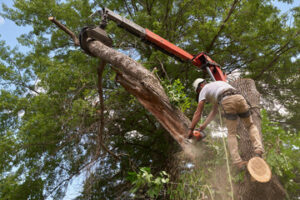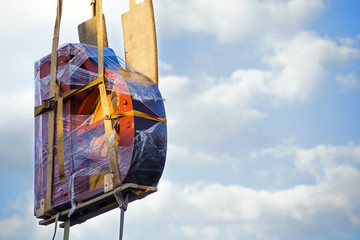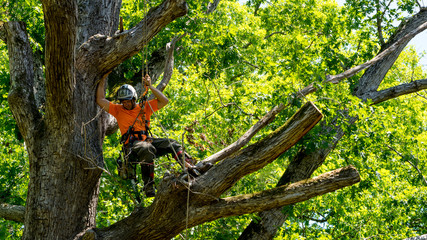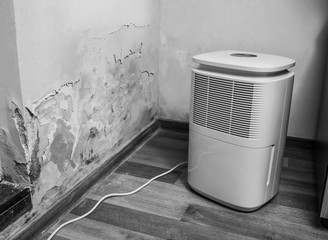Trash disposal is an issue that can be very hazardous to human health and the environment if not dealt with properly. People need to use newer and more efficient waste removal methods to avoid this.
Some of these ways include incineration, biodegradation, and landfill sites. Some of these processes require more energy and resources than others. Click https://www.armadalerubbishremoval.com.au/ to learn more.

In incineration, waste is burned at high temperatures to reduce it to ash. It is an environmentally friendly way to get rid of large amounts of waste, including chemical and biological waste. It also helps to conserve land. In addition, incineration can produce energy from the combustion of gases released during the process. The ash residue from incineration is often stored in landfills or used to make bricks and tiles. However, the ash can sometimes leach into groundwater and cause health problems. It is essential that proper incinerator design is implemented to protect the environment and human health.
The waste incinerator process involves three stages: loading of the hazardous or nonhazardous waste into a hopper; combustion in a furnace; and separation of the flue gasses from the resulting bottom ash residue. Hazardous waste incinerators have a ram feeder that automatically or manually cycles the waste into a refractory lined combustion chamber. A rotary drum inside the chamber ignites and burns the waste to ashes. In addition to heat, the incineration process produces carbon dioxide and water. Other gases include oxides of sulphur and nitrogen, and trace toxics. These gases are controlled by air pollution control devices. In addition to incineration, there are many other waste removal techniques, such as waste reduction, recycling, and composting, that can significantly reduce the size of a waste stream and the type of waste that is sent to an incinerator. These methods can also lower the concentration of toxic elements in the waste stream by reducing the number of products and containers that contain or catalyze the production of these trace toxics.
Another benefit of incineration is that it decreases the volume of waste, which can prolong the lifespan of landfills. It can also help to reduce greenhouse gas emissions by avoiding the methane produced by organic waste in landfills. In addition, some advanced incinerators can convert solid waste into electricity, which helps to alleviate stress on the power grid and create sustainable energy.
In the past, a large portion of waste was disposed in regular landfills. This led to harmful chemicals seeping into the soil and water supply, causing severe environmental and health impacts. This problem was exacerbated in areas with higher populations of low-income families and people of color. Today, many communities use incinerators to get rid of their waste. This practice is not without controversy, but it can save space and prevent groundwater contamination.
Biodegradation is a process that uses natural bacterial strains to degrade organic contaminants. This process is considered a green alternative to other waste removal techniques because it does not create harmful chemicals or gases. In addition, it can help to reduce the amount of landfill space that is required for waste disposal. It also helps to improve the overall quality of soil. Biodegradation can be used to remove petroleum and other organic contaminants from contaminated wastes, including construction waste. It can also be used to break down the wastes into innocuous components that can be recycled to make new products.
Almost all chemical compounds and materials are subject to biodegradation. However, the biodegradability of a material depends on many factors, including its location and temperature. For example, polycaprolactone (PCL), which is a synthetic polymer produced by ring opening polymerization of e-caprolactone, degrades in seawater within a few weeks. It also degrades rapidly in compost. However, it takes much longer to biodegrade in soil due to a low population of microorganisms.
While biodegradable items are considered environmentally friendly, they are not completely environmentally friendly if they are buried in landfills without proper conditions. In fact, some biodegradable plastics do not decompose at all in landfills and are a source of greenhouse gases. Those that do decompose produce methane, which is a potent greenhouse gas.
The decomposition of solid waste in landfills is a complex series of chemical and biological reactions that vary according to environmental conditions. Some of these changes are microbially driven, while others are controlled by climatic factors. For example, the permeability of the lining layer and microbial activity influence the rate at which leachate is generated and the biogas produced.
In some cases, it may be necessary to accelerate the degradation process by adding moisture to the waste. This can be achieved by recirculating the leachate or adding supplemental liquids. In addition, the type of waste material influences its biodegradability. For example, paper waste degrades faster than plastic and food waste.
The biodegradation of waste in a Centre of Complex Waste Management is based on the standardized method of Marius Pedersen a.s. The process runs in a sealed and drained biodegradation zone, which is under the control of a competent technologist. The process is continuously monitored by chemical and microbiological analyses. The procedure is adjusted based on the results of these tests. As soon as the concentration of contaminants drops below the limits defined by law, the process is terminated and the waste is transported for further utilization or final disposal.
Landfills are locations where waste materials such as wood, paper, broken furniture and obsolete electronic devices are dumped. They are surrounded by clay and rubber barriers to prevent the waste from contaminating the soil and air. These sites are usually located away from inhabited areas and fields used for agriculture or drinking water. The waste is crushed, compacted and then buried in the ground to be covered with soil. The soil is then planted with vegetation to stabilize the ground and protect it from runoff.
The landfills are designed and built to meet a series of strict environmental regulations. They are staffed by trained personnel who supervise all the operations of a landfill including waste emplacement, regular monitoring and maintenance. In addition, these facilities have a system of environmental monitoring to check for any signs of groundwater contamination. The landfills are also regulated by state and local governments to ensure that they are operating according to the laws of the land.
Modern landfills are equipped with plastic drainage pipes that channel water from areas of the landfill to collection ponds where the liquid, known as leachate, is collected and tested for contaminants. Leachate is pumped to treatment facilities onsite or offsite. This process is vital for preventing leaching of harmful chemicals into the surrounding environment. Leaching of toxic chemicals from landfills has been linked to a variety of health problems, including low birth weight in babies, reproductive disorders, and certain cancers.
In the past, people would often simply throw their trash on the ground, but today, most countries have centralized waste disposal services. These are located on the outskirts of cities and towns and are often large industrial sites. They are also a common sight in urban centers. In fact, the produces a disproportionate 12 percent of the world’s garbage, even though it only has 4 percent of the population.
As garbage decomposes in a landfill, it produces methane gas, which is a potent greenhouse gas. However, methane can also be turned into energy by extracting it from the landfill and piping it to gas turbines for electricity production.
The recycling process transforms used materials into new ones, reducing the need for extracting fresh raw materials from the Earth. It is also beneficial to the environment, because it reduces energy consumption and helps protect natural habitats. Recycling also conserves natural resources like minerals, metals, trees and water. This is an important step in promoting a sustainable society.
The basic steps in the recycling process are collection, processing, and remanufacturing into a new product. To begin, recyclables are collected from homes and businesses by private waste haulers or government entities. These are sorted, cleaned, and then transported to a recycling plant or other processing facility. This is where the majority of the actual recycling work takes place.
During this stage, the material is separated and screened for contaminants. Some materials are then bailed and shipped to a manufacturer for remanufacture into a new product. Others are repurposed as raw materials for other products, such as paper bags, glass bottles, or steel cans. Finally, some recycled material is upcycled into something that has a higher value than the original product. Examples of upcycling include making shoes from used tyres or designer furniture from old pallets.
A good way to get started with recycling is to separate your rubbish into different bins. This will make it easier to determine what is and isn’t recyclable. It is best to have one bin for general trash and another dedicated for recycling. This will save time and space in the kitchen and will make it easier to keep your recycling organized.
If you want to start recycling, look for local drop-off sites in your area and get started! It’s easy to do, and it’s a great way to help the environment. Remember to put in a clean container for recycling, and remove all wires, cords and hoses from containers (put them in trash).
The key to successful recycling is sorting your items correctly. Single-stream recycling, which is when all recyclables are placed in the same bin, is less efficient and can be very difficult to process. In addition, this type of recycling is prone to contamination from plastics, food and other non-recyclable material that contaminates the entire bale.





